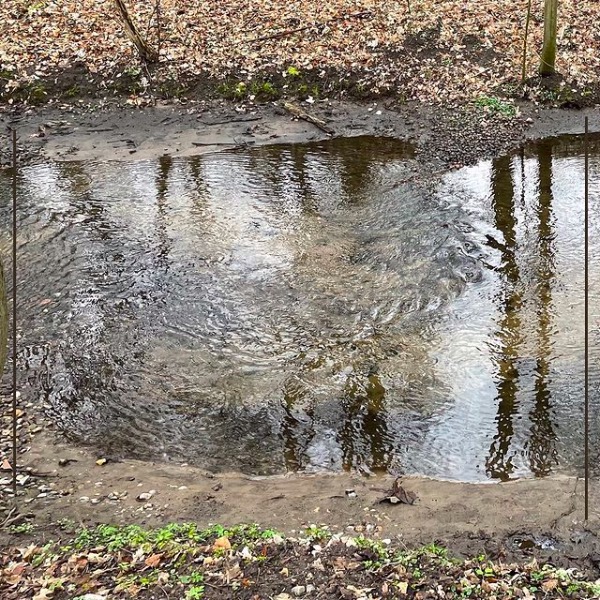
#WaveWatchingWednesday
I didn’t post one of these since Februray, so it’s about time! These are all my #WaveWatching Insta posts since then!

Ok, had to try this again because it’s so much fun (and I wanted to show @fleydok that I can do it without the mysterious apparatus, and challenge @joernaufdemkampe to do it ;)) All we need is hot water and cold air. How awesome is this?

This is an example of a frozen soap bubble that turned milky with no ice crystal structures on it (or at least none that are as prominently visible as I have had on other soap bubbles before). Funny how that happens! I wonder why this one looks different? One suggestion was that at colder temperatures smaller crystals form, but this soap bubble is from the same series as the ones I posted a couple of days ago; even taken in between the different stages of deflation of that soap bubble…
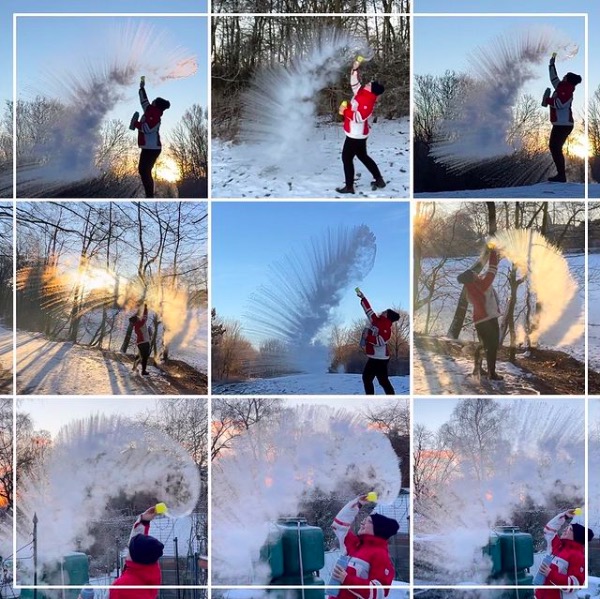
Ok yes, I might be slightly obsessed. But it never gets this cold around here, and when it does I have never thought to try this! ⠀
It’s just so fascinating how some days it works really well while others a lot of the hot water comes back down right away — a little colder, but still very clearly water and not snow. But it’s supposedly the last really cold day today, so this has probably been it for this winter…
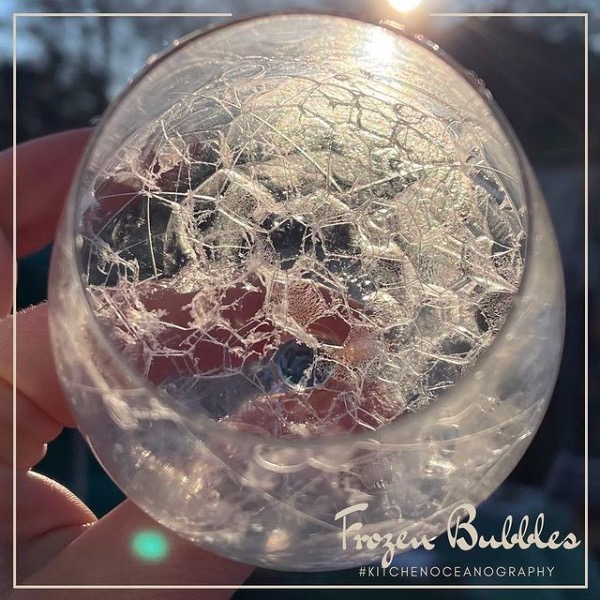
@kjersti.daae came up with another way of freezing soap bubbles — in a wine glass. But what looked really awesome in her picture totally did not work out for me! First, even though they were easier to blow, my bubbles never wanted to come out of the main body of the glass. And then when they froze all that remained were the edges of where bubbles had common side walls. Which is actually pretty cool geometry, come to think of it. Minimal surface areas for given volumes or something @fleydok?
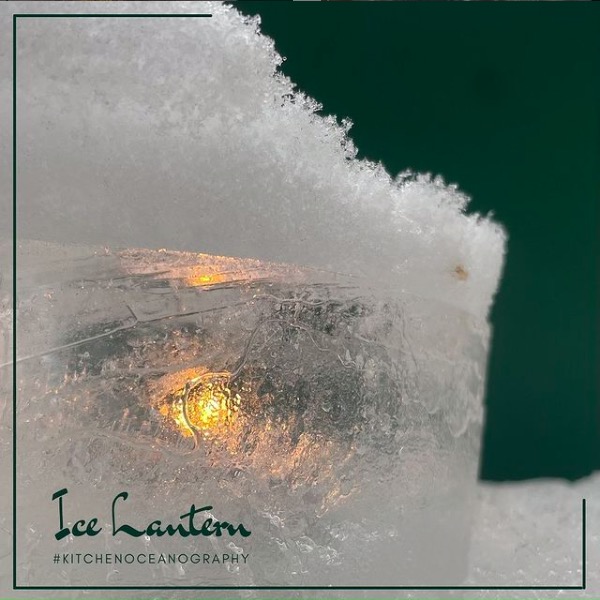
Now that everything is melting, I used the last chance to check out the ice lanterns we set outside to freeze a couple of days ago and that I had kinda forgotten about. Pictures would probably have been prettier when taken in the dark, but that can go on my “what do do next time it gets really cold” list!⠀

I find it fascinating how these ribbons of snow stick together even though there are these large stretches hanging unsupported in the air. I think it’s because the top layer started melting but froze together. Not forming a proper layer of ice, just making things stick together better. Because when the snow fell, it was pretty cold and the snow wasn’t sticky at all. Or can you think of a better mechanism that makes it stick together now?⠀
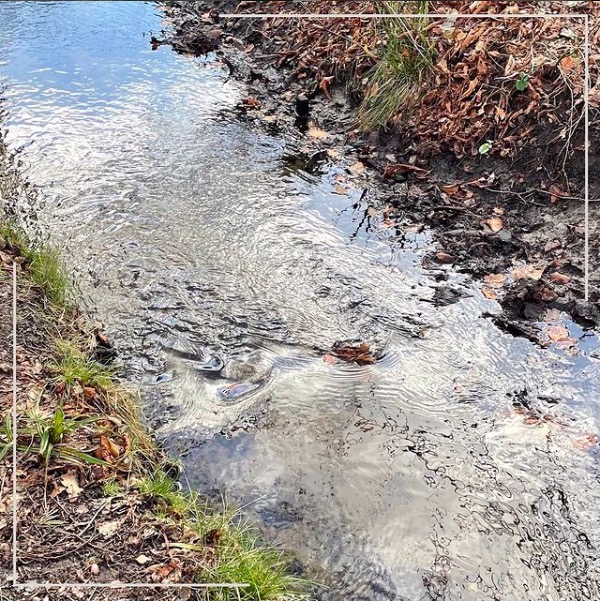
It’s really difficult to take pictures of waves in a way that the structures become clear enough to interpret. Reflections of trees or clouds are introducing spurious signals that can easily be confused with waves, and depending on the surface slope the reflections get distorted. At some angles you only see reflections, at others you can look into the water. But here I goz lucky: beautiful standing wakes upstream and wakes behind these rocks. Look at how smooth everything looks upstream and all the waves downstream of the obstacles!⠀
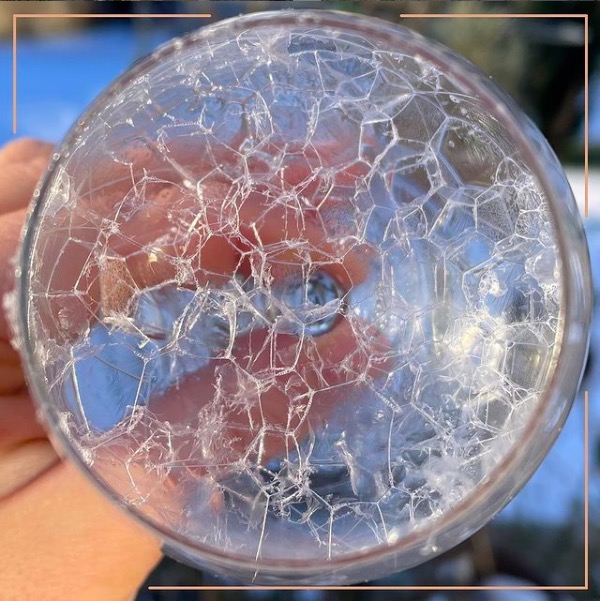
So this is another pic of my frozen soap bubbles where most of the soap bubble skins have gone and only the edges of where bubbles met have stayed intact. And today I am looking at it with very different eyes. I heard a super interesting talk within @iEarth_no on something that really got me thinking about organizing information that I am working with in a different way — thinking deeply about the _relations_ between nodes. And that got me down the rabbit hole of graphic databases as a way to formalize that thinking, and I think now I’m hooked and there is no turning back…⠀
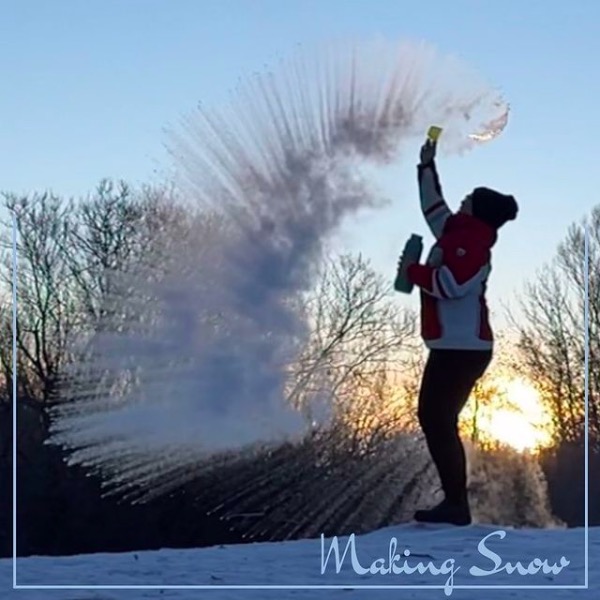
No, this is not a current picture… But I am still fascinated by this experiment and can’t believe this winter was the first time I tried it out!⠀
Looking at the water and snow flowing through the air, there are different parts. Right above my head, you see that there is still some liquid water flying out of the cup (and likely at least partly on me). In the area where we see snow, there is the outer ring where we see individual drops flying, leaving a trace of snow behind them. And then there is the inner ring, right where the cup went as I threw the water in the air, where there is a lot more snow in those foggy clouds.⠀
One thing that really doesn’t come out when looking at these pictures is also how fleeting the whole experience is. You throw the water and it’s done. It’s not like you could step out of that halo and admire it. You have to re-watch the movie on slow motion to even properly appreciate it! Anyway, I’m rambling. Point is that I’m still super fascinated!
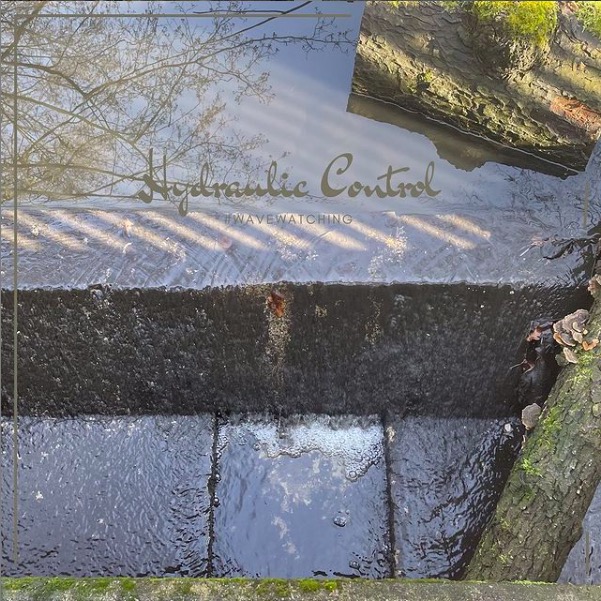
Almost looks like spring today, doesn’t it? So nice to be out in the sun!⠀
Here we see a nice example of hydraulic control. Water flows very fast across the threshold — we see that it’s fast because the waves that radiate from the obstacles look like wakes (or 2D Mach cones), meaning the water is flowing faster past the obstacles than waves can propagate in the opposite direction. And then the water that vertically goes down the drop is obviously falling faster than waves can propagate vertically upward!⠀
If you look at the waves down at the lower end, you can see that the waves look very differently here, because waves can now propagate both ways.⠀
And the area where we have all the foam? That’s where we have an hydraulic jump — it’s where the velocity changes from being faster than the waves can propagate to being slower than that.
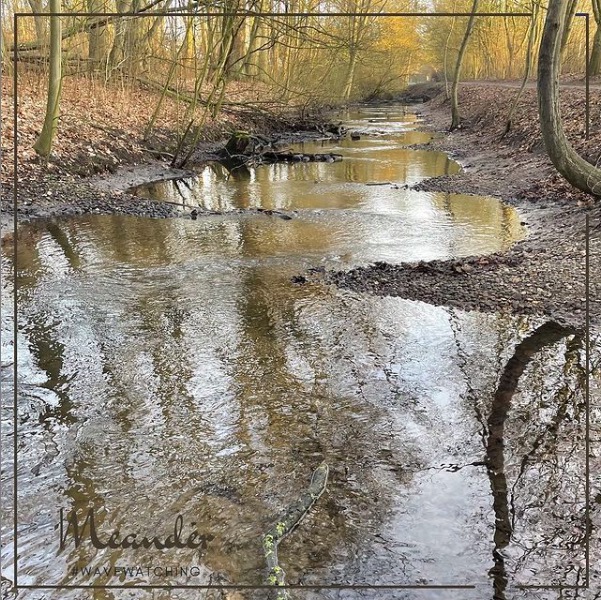
This little creek flows through artificially created meanders — and makes me happy every time I see it! And doesn’t this look like a beautiful fall day? In February :-D⠀
The little groynes (or whatever the obstacles protruding into the streem might be called) loop the stream from one side of the valley to the other and back, and the areas of high velocities show up brighter in the picture, because their higher surface roughness (more waves and eddies than in the calmer parts of the flow) reflect the ambient light from the sky, not the directional light from the trees and edges of the valley. This way we can see a lot of cross-channel flow all the way up the creek, even in places where we can’t see the obstacles any longer.⠀
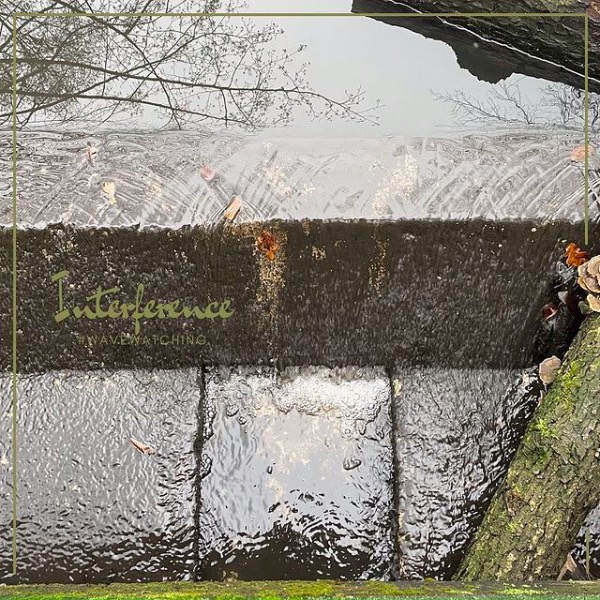
Looks familiar? Yep, posted the same spot a little while back. I think it’s quickly becoming one of my new favourite spots!⠀
Today, I am fascinated by the interference of waves on top of the threshold: All these wake-like structures that appear because the water is flowing faster than waves can propagate against it, and that overlap and form checkerboard pattern. So cool how they appear and are locked in place as standing waves, not changing over time!⠀
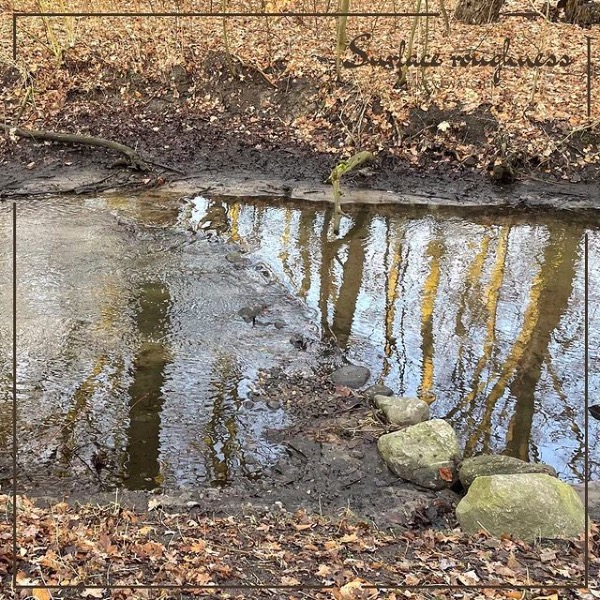
This is a pretty example of how surface roughness can tell us something about what’s going on in a flow. Towards the right, the surface isn’t completely flat (there are small disturbances in the reflections of the tree), but it’s a lot flatter than where it changes abruptly at the obstacle, downstream on the left. In the regions with the fastest flow, the reflection on that one larger tree is completely broken and there is so much light reflected from everywhere (mainly the sky) that those areas look a lot brighter and the tree seems broken into several pieces. In slower areas, there are still a lot of waves, but not enough to discontinue reflections of the tree or bigger branches. If you look back and forth across the obstacle, the difference is quite striking!
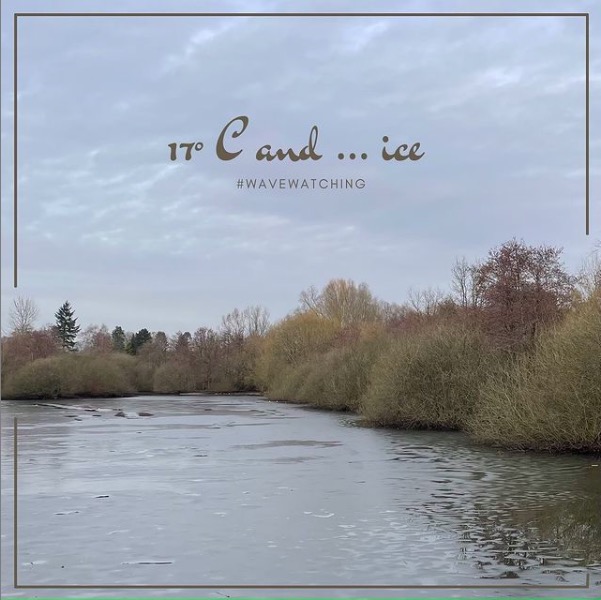
Yesterday? 17°C. Today? Again, 17°C. On the lake? Ice! Ice with melt ponds, yes, but ice!⠀
How can that be? The main effect here is the ice’s albedo: Sun light that quickly heats up darker areas and ice thus melts where it comes in contact with the muddy beach, branches that were thrown on the ice, or bushes growing through it. But ice (and even more so snow, when there was still some left on the ice) reflects sun back and heats up a lot more slowly. But it’s surreal to see ice on a lake when everything feels like spring!

A sad little bit of leftover ice from the lake here, looking at it from the side… @flxri.lng, here you see the columnar structures that you mentioned the other day! On the very surface of a lake (or puddle), ice spreads in long, horizontal crystals. But once the surface is frozen over and ice starts spreading vertically downward, this happens in vertical columns that grow individually and then freeze together over time. See how different the structure is in pic 2, where we are looking at it from the top?

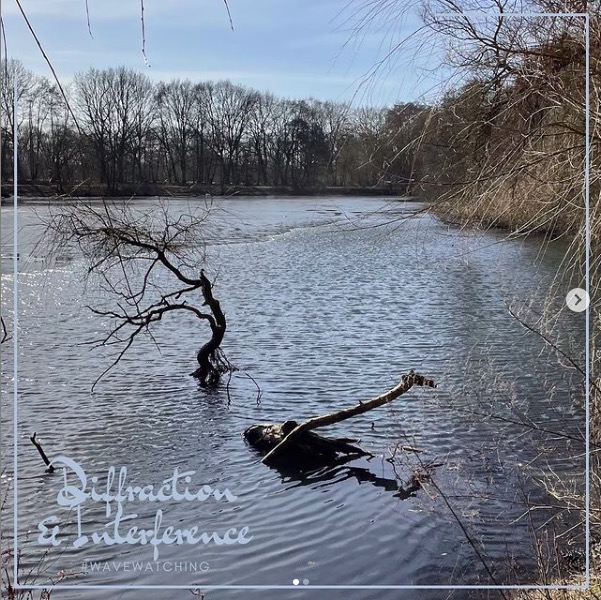
Here we see both diffraction (the waves spreading behind an obstacle, where they get bent) and interference (where the bent parts of the waves run into each other behind the obstacle). Finally some real #wavewatching again!
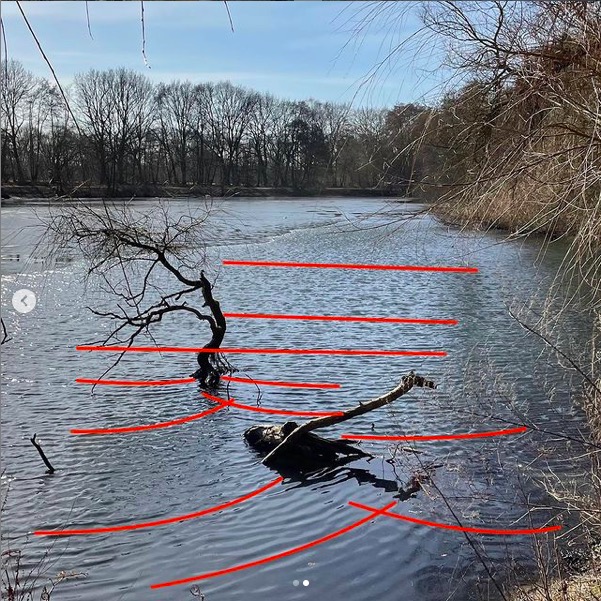

The snow is long gone in Hamburg, but this pic was still sitting in my Instagram queue and I just couldn’t kick it out. Even though I took it only a 15 minute walk from home, I remember the situation very well, and it felt like I was on an exciting winter vacation with the deep snow, the blue skies, the warm sun, and the beautiful icicles (Am I the only one who always has to double-check the spelling? It looks weird to me, but I think I got it right this time). Also, wearing the world’s best mittens @kjersti.daae :)⠀
Anyway, icicles. Isn’t it fascinating how the sun is warm enough to melt snow so it starts flowing as a liquid, but then it’s cold enough that it freezes again and forms the growing icicles? On the one hand I can imagine touching the warm, dark wood and the cold icicles and it totally makes sense, but on the other hand — how weird is that???
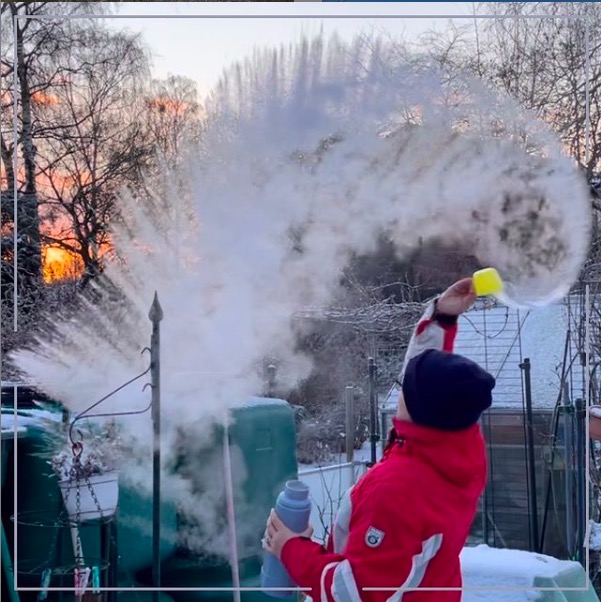
Old pic, yes… But how cool is it that you see how fast I moved the cup relative to how fast water is flying away from it, and exactly in what direction? In the time that I moved the cup from where I poured water into it (probably approximately where my left hand still is) to where it is in the picture, the water flew from where my left hand is, past the spear-shaped plant-holder thingy. And its trajectory is also still visible thanks to the snow that formed where the water drops flew past! Love playing with tracers…⠀

See the two different textures on the surface? The upper one is ice that is going to melt fairly soon, and the lower one are standing waves in the current. And yes, I crawled through a hedge to take this picture.
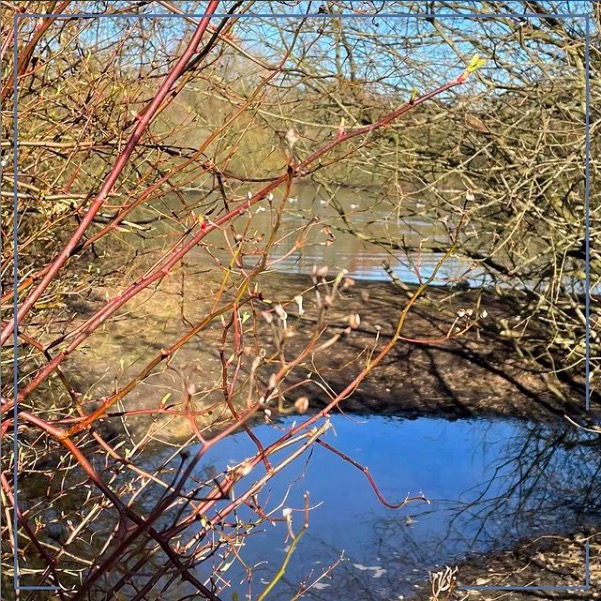
Like different areas of a mirror reflect different parts of your face and the room around you, of course different areas of the lake will reflect different parts of the sky and bushes around it. Here nicely demonstrated by the calm puddle and the lake behind it, where on the lake we have the added difficulty that it’s not plane and therefore reflects from a wider angle.
Btw, I only noticed the fresh green leaves when cropping the pic. When I took it I just saw water
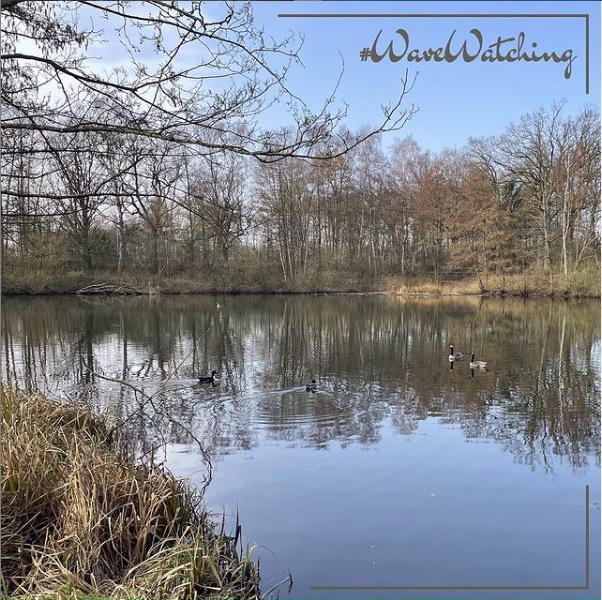
What I wanted to take a picture of? The duck that was sitting in one spot, making waves. But by the time I had my camera out, it had started swimming: you still see the remnants of the ring-shaped waves, and the duck escaping from them at the tip of a V-shaped wake.⠀
Another wake behind the duck on the left. And a very weak criss-cross-pattern in the foreground, can you see?⠀
What a nice #WaveWatchingWednesday and walk with @fraubioke :)⠀
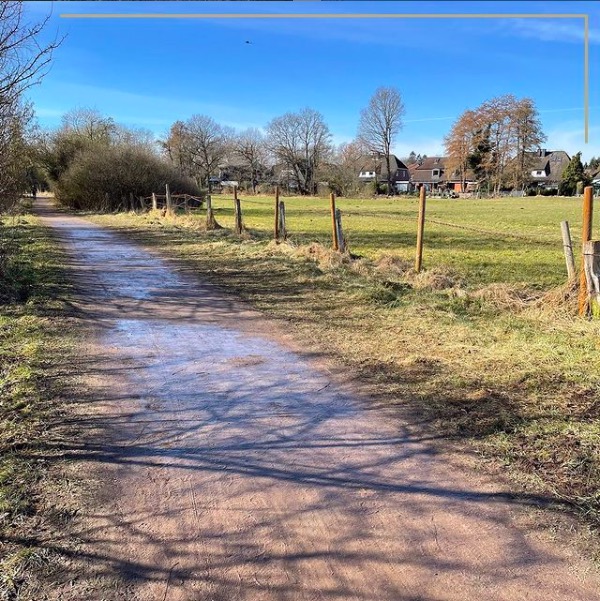
Taught a workshop on hybrid teaching and learning today, and always on the schedule: an active lunch break with a quick walk & a pic that somehow relates to the subject we are teaching.
Mine: on frozen grounds, a very thin layer of water is enough to look like an actual body of water: reflecting the sky & not permitting a view of the ground below.
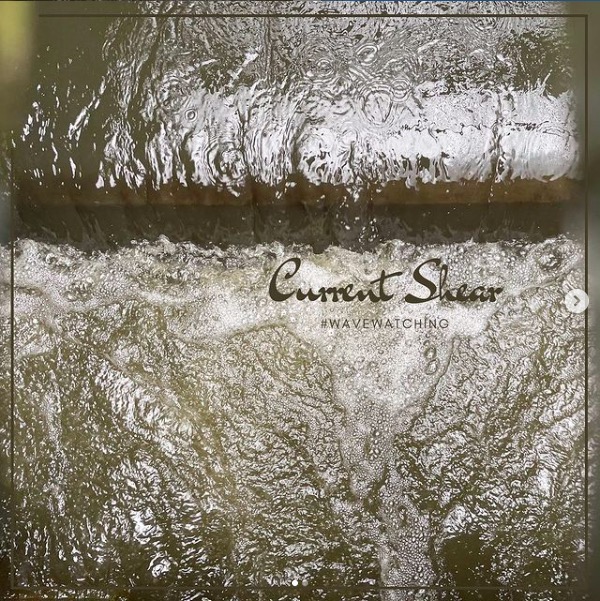
What I found really fascinating today: How wave rings got deformed as they were shooting down over that weir. Far upstream of the sill they spread equally in all directions as they are transported towards the weir (see yellow marks on the second pic). But then at some point, they get deformed as their downstream end accelerates faster than their upstream end, pulling them into an oval shape (red marks). And then they just fall down the step and end up in beautiful turbulence, but for a brief moment they were a beautiful visualization of current shear.⠀
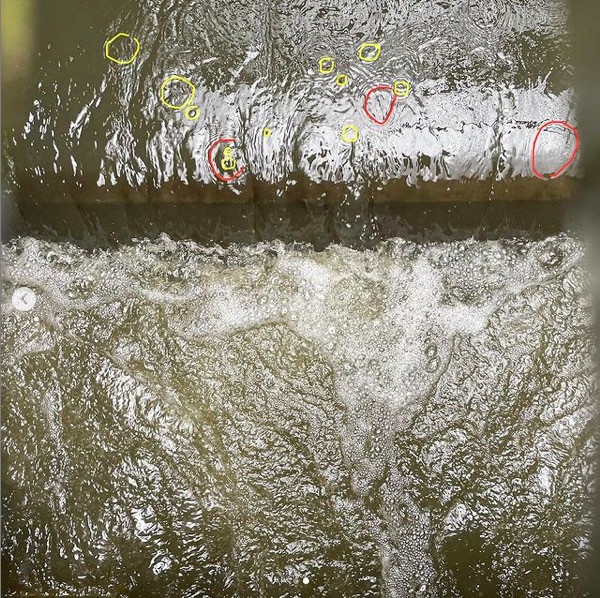

I just looooove the different kinds of waves here: The one from where the current is funneled through the narrow bit between the two stones from right to left (standing waves where it is fastest in that wedge in the middle, and then waves propagating away from there) and then the pretty ring waves made by rain drops. And looking at the stone in the top right corner, you can see its wake as a V opening in downstream direction, with the stone in its center.⠀
I just find it super calming to look at these pattern — ever changing, but always the same. It is my escape from everything else, somehow grounds me and gives me peace. I got a really nice message about my wave pics yesterday that articulated similar feelings about their calming effects and the more things change, the more they stay the same, and it was really heartwarming to read that the wave watching that is so important to me, also has an impact on other people’s lives without me even realizing it. You know who you are, thank you! <3

Confluence of two streams: the fast flowing one (right to left) is sendung waves up the slow flowing one!
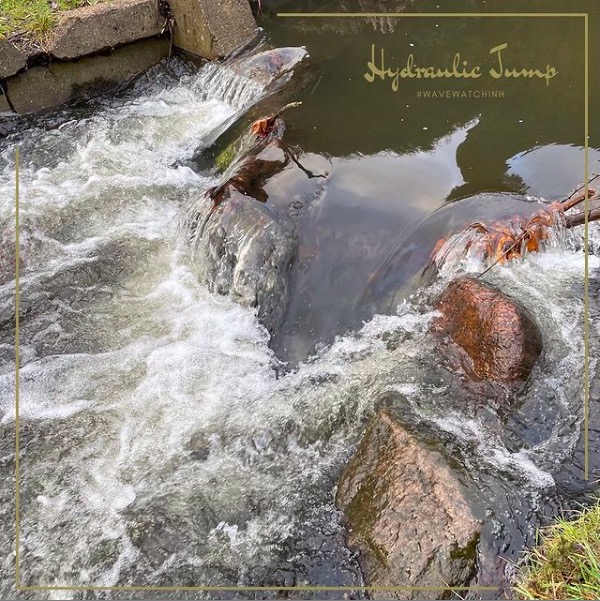
I love the contrast between the water shooting down (i.e. flowing so fast that the surface looks smooth because all waves just get flushed away) and the turbulent white water that looks almost as if it was boiling. The two regimes are separated by a hydraulic jump (which, in this case, is submerged), the spot where the velocity of the water changes from faster than waves can propagate to slower, so waves rather than the current dominate what we see.⠀
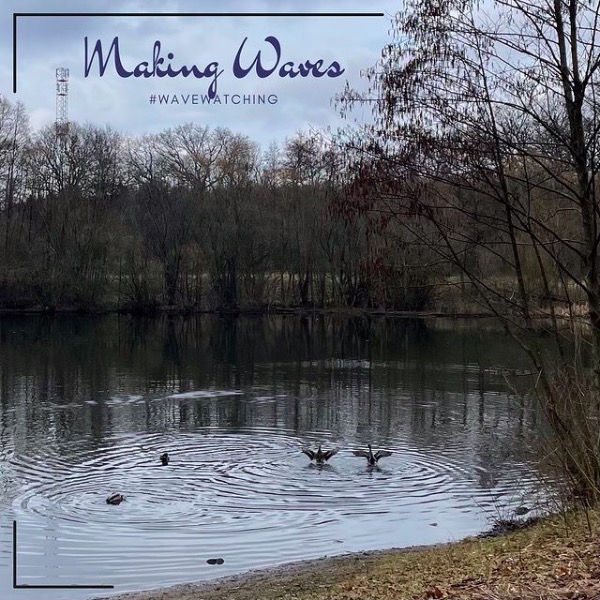
Awesome wave watching can be had everywhere. Even on no wind, no sun, otherwise pretty boring days. Isn’t it an awesome hobby to have? Even if there had been no happy ducks, I could have made my own waves and been just as happy.⠀
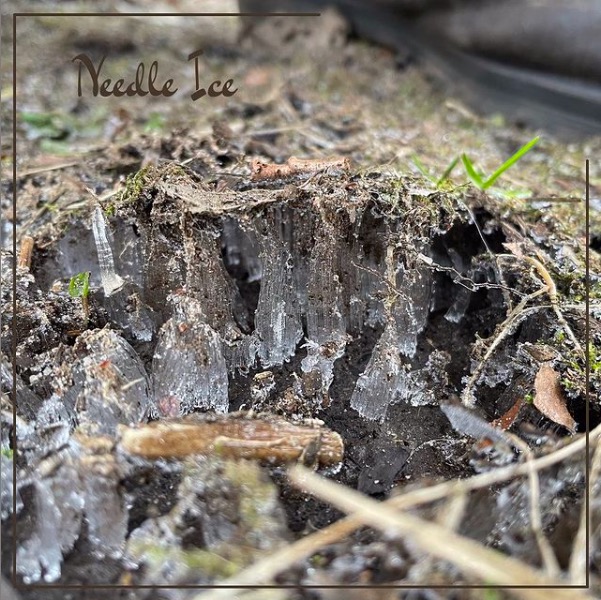
Spotted this morning: needle ice! It forms when the ground is warmer than zero degrees and slowly gets cooled top to bottom by colder air. Water gets pushed upward as it expands and freezes, forming these thin columns or needles. In this case this happened slightly below ground: a thin layer of soil got pushed up and the layer of needle ice formed underneath! In thr top righthand corner you see my foot for scale & perspective. Always fun to discover such things! :)
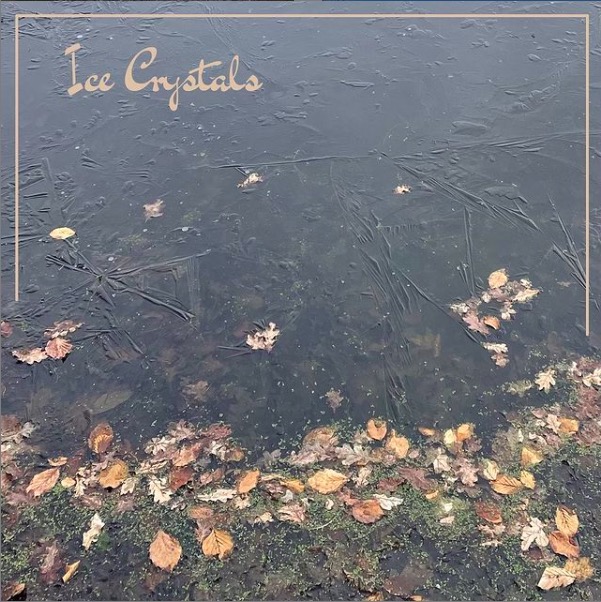
So much for spring… But awesome long needles that formed before the whole surface froze!

Diffraction: waves bend after obstacles or slits. Here: the tree blocks parts of the waves, and waves are bent around it, propagating into the calm water in its lee.
#Optics would be so much more fun to learn if people learned it by #WaveWatching!

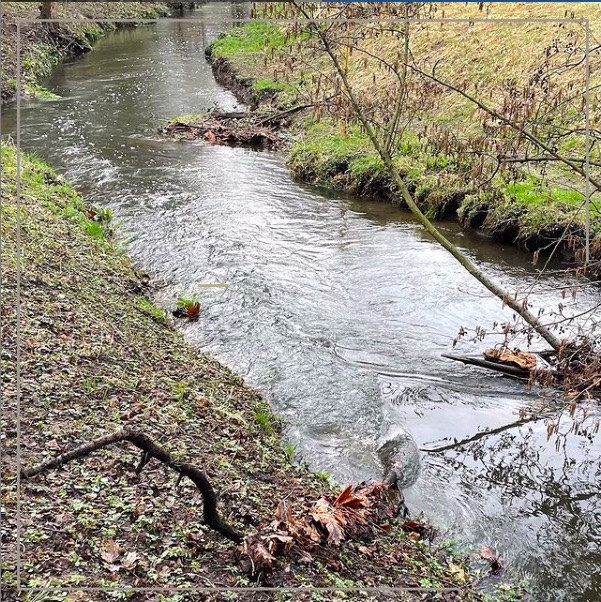
Fascinating how the water surface is smoothest where the current is fastest: In that wedge between the obstacles! It’s still fast downstream from there, where it meanders along the river bed, but in that wedge the flow is super critical, meaning it’s so fast that all disturbances just get flushed away, making the surface look silky smooth.⠀
Also pretty cool how we can see the bubbles (that are created right where the water shoots over the obstacle on this side of the river, see?) marking the main path of the current!⠀

My favorite #wavewatching spot these days: where the little stream has been artificially forced into a meandering pattern! After too much rain water levels are too high and the submerged obstacles stop influencing the flow too much. But with just a little current it is awesome to watch the standing waves on the sharp bends.⠀
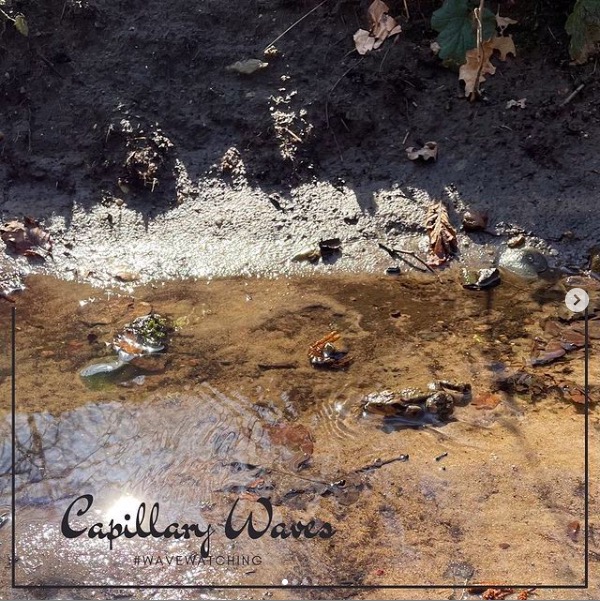
That was a fun lunchtime walk “with” @fraubioke and lots and lots of amphibians!
Love the capillary waves this toad is pushing in front of itself as it is walking (crawling? What is it called?) through the water! Capillary waves are the really short waves that are driven by surface tension rather than gravity, and you see them really clearly right in front of its snout. They are also the ones you see directly in front of your finger tips when moving your hands forward in breaststroke. I miss swimming…
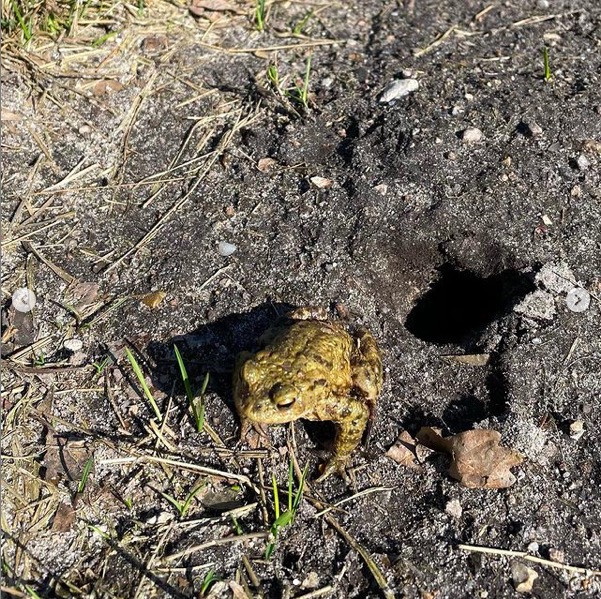

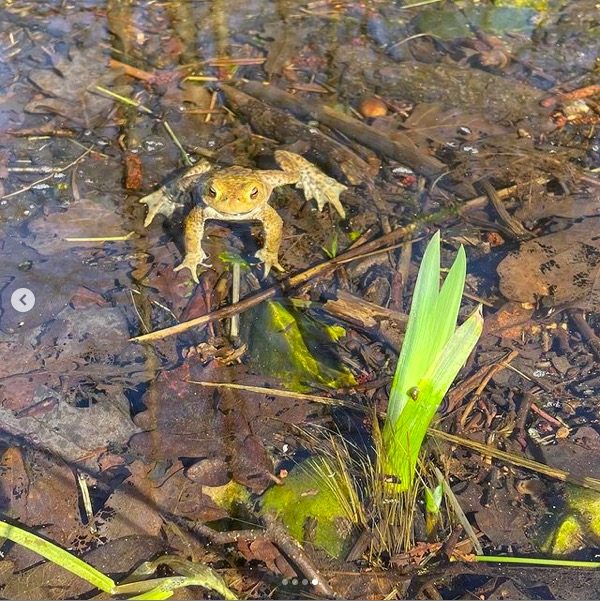
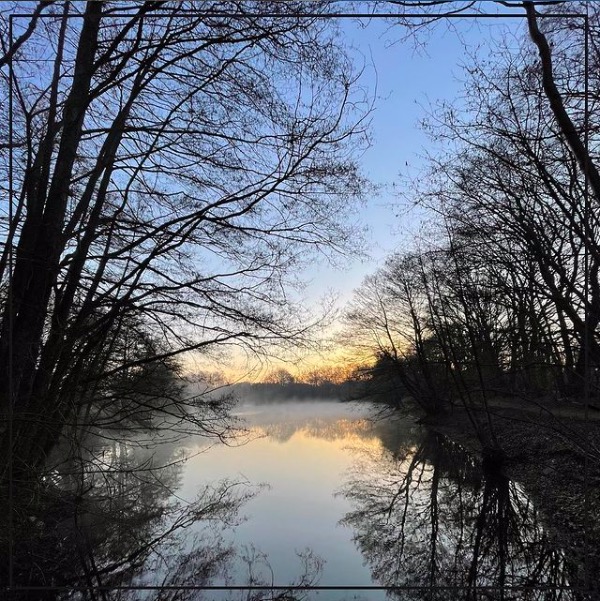
Good morning! :)
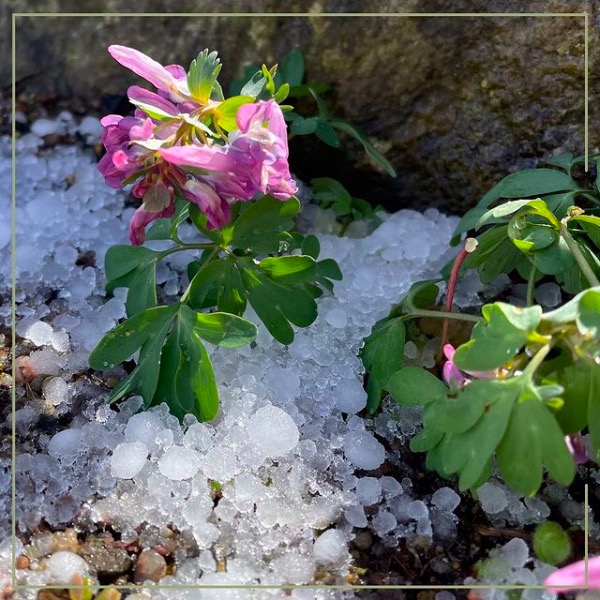
Oh hello April!